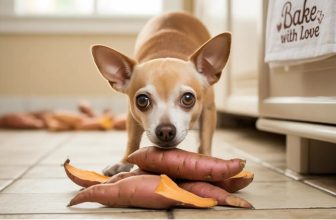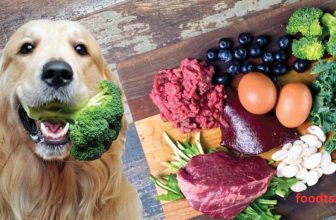Fiber in Dog Food: Powerful Way to Boost Health
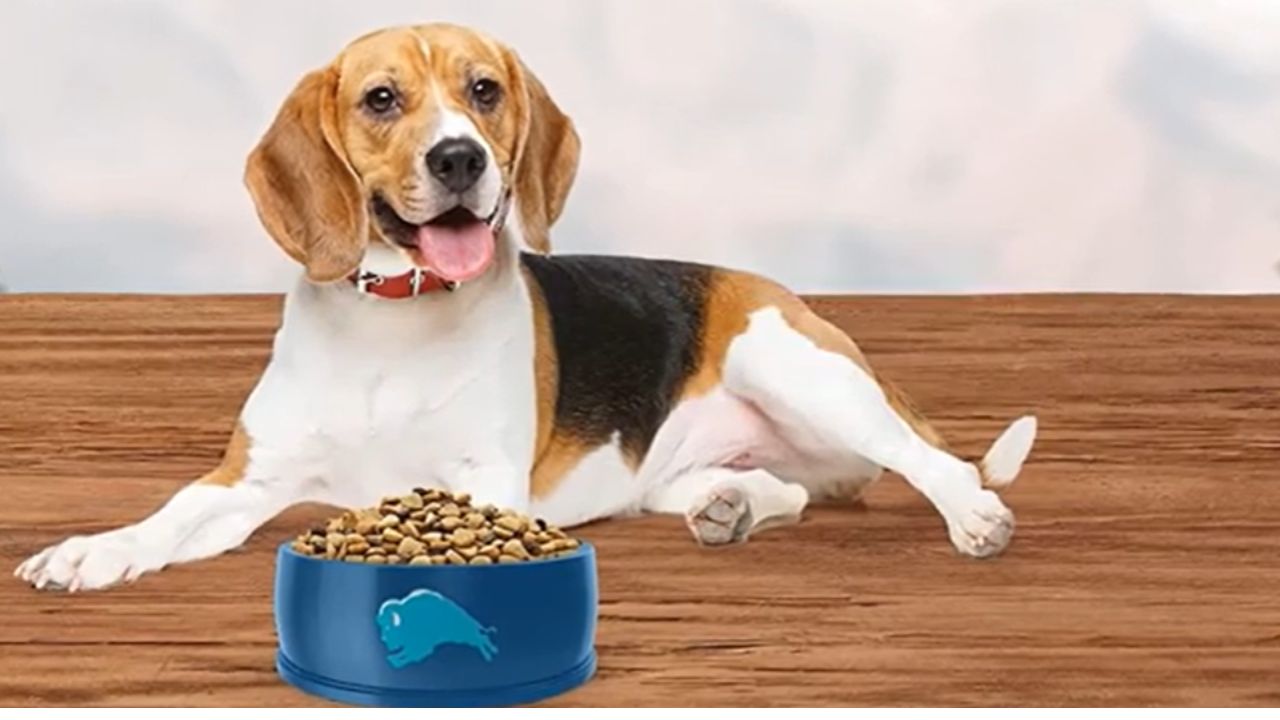
Why Fiber in Dog Food Matters for Your Dog’s Health
Fiber in dog food is often overlooked, but it plays a crucial role in your dog’s overall well-being. While many pet owners focus on protein and fat, fiber quietly supports digestion, prevents constipation, and can even help manage weight. A balanced diet that includes the right amount of fiber in dog food keeps your pup active, healthy, and happy. By understanding how fiber benefits your dog, you can make smarter choices when selecting their meals. Always check the ingredient list to ensure your dog food includes quality fiber sources.
Importance Of Fibre
Fibre is an essential part of a dog’s diet. It plays a vital role in maintaining overall health. Many dog owners are unaware of the benefits of fibre in dog food. Fibre aids in digestion and helps manage weight. Understanding the importance of fibre can lead to healthier, happier pets. Let’s explore how fibre impacts your dog’s well-being.
Digestive Health
Fibre is crucial for promoting digestive health in dogs. It helps regulate bowel movements and prevents constipation. Dogs with enough fibre in their diet tend to have better gut health. Fibre also acts as a prebiotic. It supports the growth of healthy bacteria in the intestines.
Benefits of fibre for digestive health include:
- Regular bowel movements: Fibre helps maintain consistency in stools.
- Prevention of constipation: It adds bulk to the stool.
- Healthy gut bacteria: Supports a balanced intestinal flora.
There are two types of fibre: soluble and insoluble. Soluble fibre dissolves in water and forms a gel-like material. It helps slow down digestion. Insoluble fibre adds bulk and helps food pass through the digestive system.
| Type of Fibre | Function |
|---|---|
| Soluble Fibre | Slows digestion, regulates blood sugar |
| Insoluble Fibre | Adds bulk, prevents constipation |
Weight Management
Fibre plays a significant role in weight management for dogs. It helps dogs feel full for longer periods. This reduces the urge to overeat. High-fibre foods tend to have fewer calories. This helps in maintaining a healthy weight.
Here are some ways fibre aids in weight management:
- Feeling full: Fibre increases satiety and reduces hunger.
- Lower calorie intake: Fibre-rich foods are often less calorie-dense.
- Better digestion: Helps break down fats and carbohydrates efficiently.
Dogs that are overweight or prone to obesity can benefit greatly from a high-fibre diet. It is important to choose dog food that contains the right balance of fibre. Consult with a veterinarian to determine the best fibre sources for your dog.
Types Of Fibre
Fibre is an essential part of a dog’s diet. It helps with digestion and keeps the gut healthy. Fibre can be found in many dog foods. It is important to know about the different types of fibre. This helps in choosing the right food for your dog. The two main types are soluble fibre and insoluble fibre. Each type offers unique benefits. Understanding these can improve your dog’s health.
Soluble Fibre
Soluble fibre dissolves in water. It forms a gel-like substance. This type of fibre slows digestion. It helps in regulating blood sugar levels. Soluble fibre can make dogs feel full, reducing overeating. It is often found in foods like oats and barley.
- Helps regulate blood sugar levels.
- Slows down digestion.
- Makes dogs feel full, reducing overeating.
Sources of soluble fibre include:
| Food Source | Benefits |
|---|---|
| Oats | Good for heart health |
| Barley | Supports digestion |
| Psyllium husk | Helps with constipation |
Including soluble fibre in your dog’s diet can help maintain a balanced weight. It also supports overall health. It is important to choose dog food with the right amount of soluble fibre.
Insoluble Fibre
Insoluble fibre does not dissolve in water. It adds bulk to the stool. This helps food pass quickly through the stomach. Insoluble fibre is key for regular bowel movements. It prevents constipation. It is found in foods like whole grains and vegetables.
- Adds bulk to stool.
- Helps prevent constipation.
- Supports regular bowel movements.
Common sources of insoluble fibre include:
| Food Source | Benefits |
|---|---|
| Whole grains | Promotes regularity |
| Brown rice | Helps with digestion |
| Carrots | Good for eye health |
Including insoluble fibre ensures your dog has healthy digestion. It keeps the gut clean and working well. Feeding your dog food with insoluble fibre helps maintain a healthy weight.
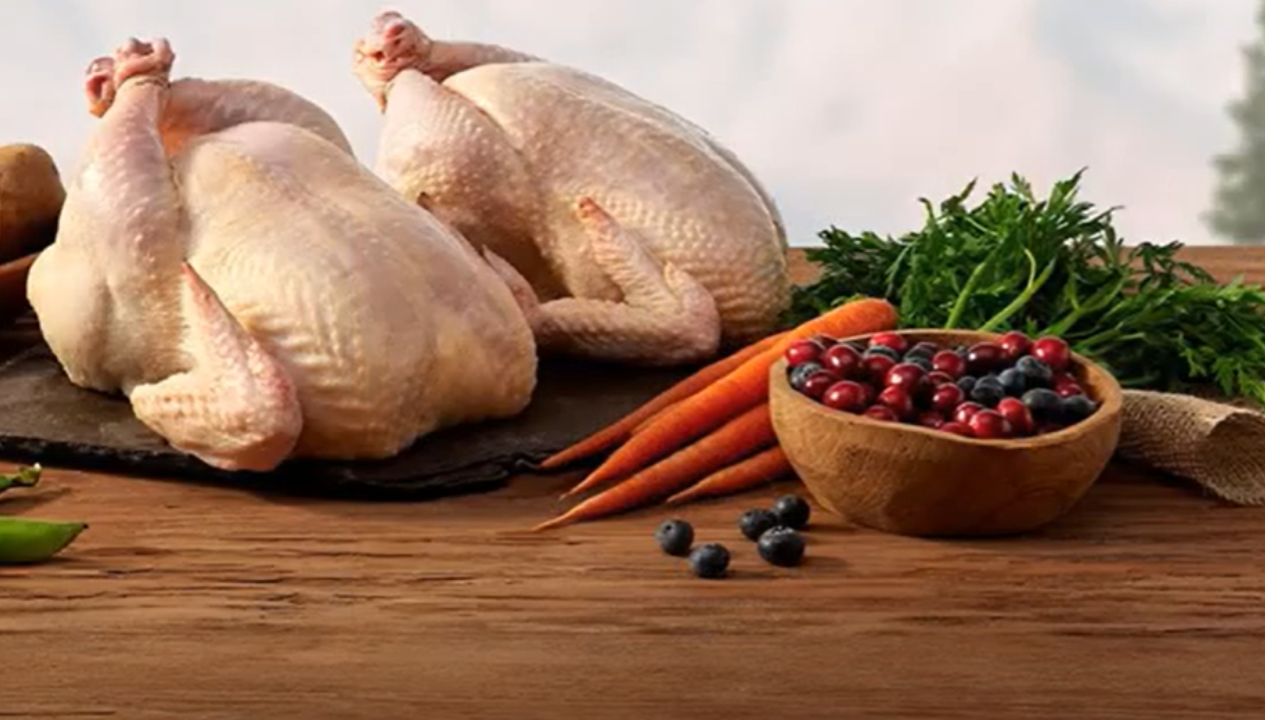
Sources Of Fibre
Fibre is essential for a dog’s health. It aids digestion and supports a healthy weight. Including fibre in their diet is crucial for a balanced meal. Various sources of fibre can benefit your dog’s diet. This article explores vegetables, fruits, and grains as primary sources. Understanding these can help you make informed decisions about your dog’s nutrition.
Vegetables
Vegetables are a rich source of fibre for dogs. They provide essential nutrients and support digestive health. Adding vegetables to a dog’s diet can improve their overall well-being.
Some of the best vegetables for dogs include:
- Carrots: High in fibre and great for dental health.
- Green beans: Low in calories and rich in vitamins.
- Sweet potatoes: Packed with fibre and antioxidants.
- Broccoli: Offers fibre and supports immune health.
These vegetables can be cooked or served raw, depending on preference. It’s essential to introduce them slowly into the diet. This ensures that the dog’s system adjusts well.
Fruits
Fruits offer a tasty way to add fibre to a dog’s diet. They are not only delicious but also packed with nutrients. Including fruits can make meals more exciting for your dog.
Here are some beneficial fruits for dogs:
- Apples: Provide fibre and vitamin C, but remove seeds.
- Bananas: High in fibre and potassium, ideal for snacks.
- Blueberries: Antioxidant-rich and low in calories.
- Pumpkin: Excellent for digestive health, especially canned pumpkin.
Fruits should be given in moderation. Too much can lead to stomach upset. Always wash fruits thoroughly before serving. This ensures all pesticides are removed.
Grains
Grains are another excellent source of fibre. They are often found in commercial dog foods. Grains provide energy and support digestive health.
Common grains suitable for dogs include:
- Oats: Gentle on the stomach and rich in fibre.
- Brown rice: A good source of fibre and easy to digest.
- Barley: Offers fibre and supports heart health.
- Quinoa: A complete protein and rich in fibre.
These grains should be cooked before serving. Cooking makes them easier to digest. It’s vital to monitor portion sizes. Overfeeding grains can lead to weight gain.
Fibre Needs By Breed
Fibre is an essential part of a dog’s diet, providing numerous health benefits. It aids digestion, helps maintain a healthy weight, and can prevent constipation. Different dog breeds have varying fibre needs based on their size and activity levels. Understanding these requirements ensures your furry friend stays healthy and happy. This guide explores the fibre needs of small and large dog breeds, helping you choose the best diet for your pet.
Small Breeds
Small dog breeds, like Chihuahuas and Pomeranians, have unique dietary needs. Their smaller stomachs mean they require nutrient-dense food. Fibre plays a crucial role in their diet for several reasons:
- Digestive Health: Fibre helps keep their digestive system running smoothly.
- Weight Management: It can prevent obesity by creating a feeling of fullness.
- Energy Levels: Aids in maintaining consistent energy throughout the day.
For small breeds, a balanced fibre intake is essential. Here’s a simple table to illustrate the average fibre needs:
| Breed | Fibre Percentage in Diet |
|---|---|
| Chihuahua | 2-4% |
| Pomeranian | 3-5% |
| Yorkshire Terrier | 2-4% |
Choosing high-quality dog food with the right fibre content is vital. Look for ingredients like beet pulp and whole grains. These provide the necessary fibre without adding unnecessary fillers.
Large Breeds
Large dog breeds, such as Labradors and German Shepherds, have different fibre needs. Their larger bodies require more food, and fibre helps support their overall health:
- Joint Health: Fibre helps reduce inflammation, which can protect joints.
- Weight Control: It aids in preventing weight gain, reducing strain on joints.
- Digestive Efficiency: Promotes efficient digestion and nutrient absorption.
For large breeds, a higher fibre percentage may be beneficial. The following table outlines typical fibre requirements:
| Breed | Fibre Percentage in Diet |
|---|---|
| Labrador Retriever | 3-5% |
| German Shepherd | 4-6% |
| Great Dane | 3-5% |
Select dog food that contains natural fibre sources. Ingredients like sweet potatoes and peas are excellent choices. They ensure your large breed dog gets the necessary fibre for optimal health.
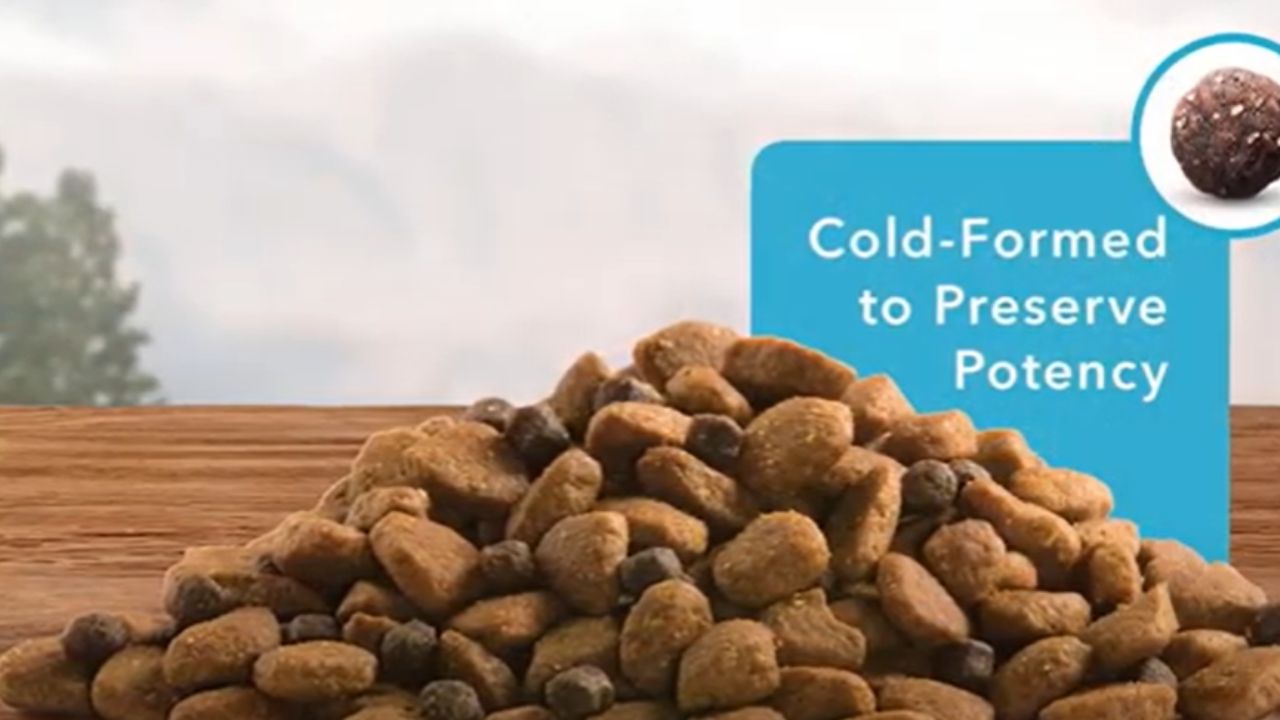
Signs Of Fibre Deficiency
Dogs need a balanced diet, just like humans. Fibre is an important part of this diet. It helps with digestion and keeps the gut healthy. Signs of fibre deficiency can be troubling for your furry friend. Knowing these signs can help you provide the best care. This post will highlight two main signs of deficiency. Understanding these signs can improve your dog’s health and happiness.
Constipation
Constipation in dogs can be a sign of low fibre intake. Fibre helps to move food through the digestive system. Without it, dogs may struggle to pass stools. Here are some common signs of constipation in dogs:
- Straining during bowel movements.
- Less frequent bowel movements.
- Hard, dry stools.
Causes of constipation can vary, but low fibre is a common one. Dogs on a low-fibre diet often face digestive issues. To help your dog, consider a diet rich in fibre. Foods like pumpkin, carrots, and peas are good options. They are natural and easy for dogs to digest. Adding these can help relieve constipation. Always make changes slowly to avoid upset stomachs.
Monitoring your dog’s diet is crucial. Keep an eye on their bathroom habits. If constipation persists, consult a vet. They can provide professional advice and treatment. Remember, a well-balanced diet is the key to a healthy dog.
Diarrhea
Diarrhea is another sign of possible fibre deficiency in dogs. It indicates that your dog’s digestive system is not balanced. Fibre can help stabilize their stools. Here are some symptoms of diarrhea in dogs:
- Loose, watery stools.
- Frequent need to go outside.
- Urgency in bowel movements.
Many factors, including low fibre, can cause diarrhea. Fibre helps absorb excess water in the intestines. This makes stools firmer and more regular. To combat diarrhea, increase fibre gradually in your dog’s diet. Oatmeal and sweet potatoes are excellent sources of fibre. They are gentle on a dog’s stomach and improve digestion.
Hydration is also important when dealing with diarrhea. Ensure your dog has plenty of fresh water. This prevents dehydration, which can worsen the condition. If symptoms continue, a vet visit is necessary. They can test for other causes and suggest dietary adjustments. Always aim for a balanced diet to keep your dog healthy and active.
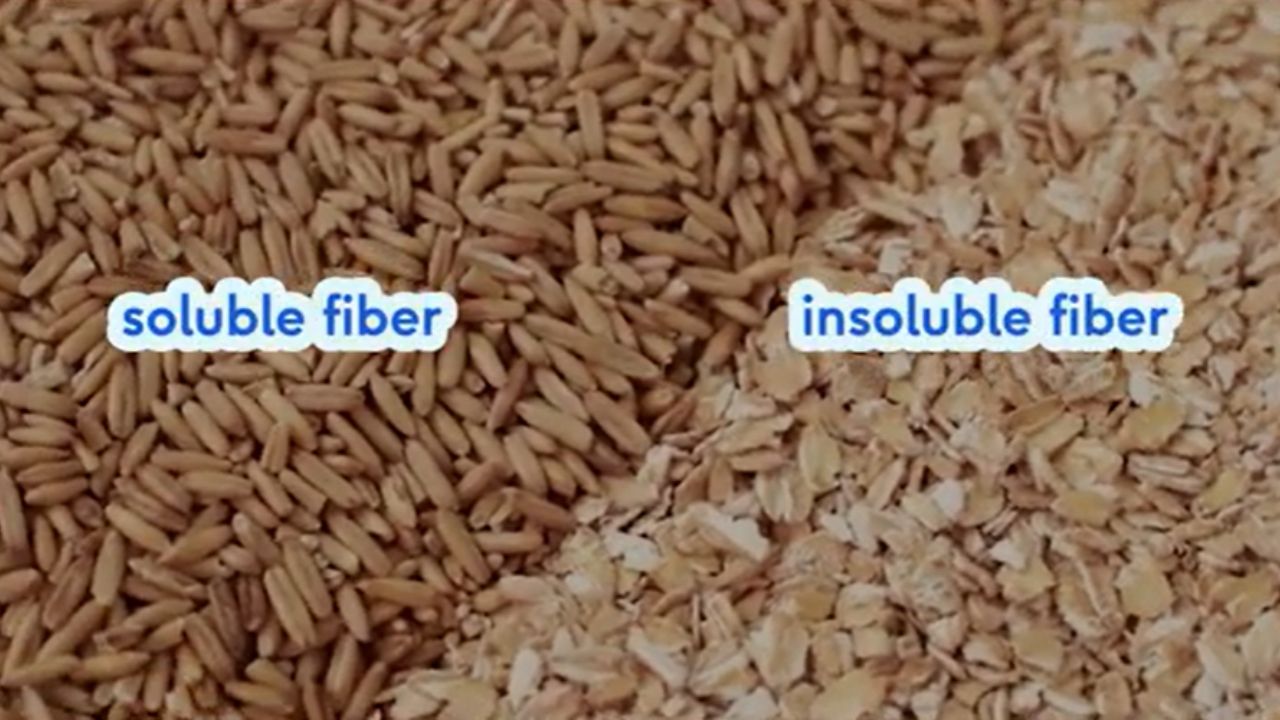
Adding Fibre To the Diet
Fibre plays a crucial role in a dog’s diet. It aids digestion, helps maintain a healthy weight, and prevents constipation. Adding fibre to a dog’s diet can improve their overall health and energy levels. Fibre also supports the growth of good bacteria in the gut, which boosts the immune system. It is important to know the sources of fibre for dogs. Choosing the right type of fibre can make a big difference in their well-being.
Commercial Foods
Many commercial dog foods include fibre to support digestive health. These products are convenient and come with balanced nutrients. Commercial dog foods often contain ingredients like beet pulp and pumpkin. These ingredients provide adequate fibre content. Here are some advantages of commercial dog foods:
- Easy to find in pet stores and online.
- A variety of options are available for different breeds and sizes.
- Pre-measured servings ensure proper nutrition.
- Quality control ensures safe ingredients.
Choosing the right brand is essential. Look for labels that mention high fibre content. Some brands even specify the percentage of fibre in their products. It’s important to consult with a vet. A vet can recommend the best commercial food for your dog’s needs. They can also suggest brands that focus on natural ingredients.
Homemade Options
Preparing homemade food for dogs allows for more control over ingredients. Many household items can add fibre to a dog’s diet. Vegetables like carrots and peas are excellent sources of fibre. Brown rice and oatmeal are also beneficial. Here are some ideas for homemade fibre-rich meals:
- Mix cooked brown rice with their regular food.
- Add steamed vegetables to their meals.
- Include a spoonful of cooked oatmeal for breakfast.
Making homemade food requires careful planning. Ensure balanced nutrition by including proteins and vitamins. Consult with a vet for guidance on homemade diets. They can provide recipes tailored to your dog’s needs. Homemade options can be cost-effective and healthy. They offer a chance to use fresh and natural ingredients.
Potential Risks
Fibre is an important part of a dog’s diet. It helps with digestion and keeps the gut healthy. While it has many benefits, there are potential risks involved. If not managed well, these risks can affect a dog’s health. Dog owners need to know about these risks. Understanding them can help make better food choices for pets. This post explores the potential risks associated with fibre in dog food.
Overconsumption
Dogs need fibre, but too much can be harmful. Overconsumption can lead to various issues. Here are some key points to consider:
- Digestive Problems: Too much fibre can cause diarrhea or constipation.
- Nutrient Absorption: Excess fibre can block important nutrients.
- Weight Issues: High fibre diets may lead to weight loss.
It’s important to balance fibre in a dog’s diet. Here is a simple table showing fibre needs based on dog size:
| Dog Size | Fibre Percentage |
|---|---|
| Small | 1-5% |
| Medium | 2-6% |
| Large | 3-7% |
Always consult a vet for personalized advice. Each dog is different.
Allergies
Dogs can be allergic to certain fibres. It’s important to watch for signs. Common symptoms of allergies include:
- Itchy Skin: Dogs may scratch or lick a lot.
- Stomach Upset: Vomiting or diarrhea can occur.
- Ear Infections: Recurring ear issues might occur.
Identifying allergies early is crucial. Here are a few steps to help:
- Introduce new fibres slowly into their diet.
- Observe any changes in behavior or health.
- Consult a vet if symptoms appear.
Some fibres are more likely to cause allergies. Wheat and soy are common culprits. Choosing hypoallergenic fibres can be safer. Every dog is unique, so pay attention to their specific Consulting a Vet
Many dog owners wonder about the benefits of fibre in their pets’ diet. Fibre is essential for dogs as it aids in digestion and helps maintain a healthy weight. It can also prevent constipation and promote overall gut health. But how do you ensure your dog is getting the right amount of fibre? Consulting a vet is crucial when considering dietary changes for your pet. A vet can provide guidance tailored to your dog’s specific needs, ensuring they receive the benefits of fibre without any adverse effects.
Regular Check-ups
Regular check-ups with a vet are important for monitoring your dog’s health. These visits help identify any dietary issues early. During a check-up, your vet will assess your dog’s overall health, including weight, coat condition, and energy levels. Regular assessments ensure your dog’s diet is working well.
Here are some benefits of regular vet check-ups:
- Early detection of health problems.
- Advice on dietary needs.
- Monitoring of weight and body condition.
- Vaccination updates for better immunity.
Regular visits also build a relationship between your pet and the vet. Your dog becomes comfortable with the vet, making future visits easier. These check-ups create a complete health record for your dog. This helps in making informed decisions about dietary changes, including fibre intake.
Dietary Adjustments
Dietary adjustments may be needed to incorporate fibre into your dog’s diet. Vets can recommend changes based on your dog’s age, breed, and health status. They might suggest adding vegetables, fruits, or specialized fibre-rich dog food. This ensures your dog receives optimal nutrition.
Here’s how fibre can be added to your dog’s diet:
| Fibre Source | Benefits |
|---|---|
| Vegetables like carrots | Improves digestion |
| Fruits like apples | Promotes gut health |
| Specialized dog food | Balanced nutrition |
Adjusting fibre levels can help with weight control. It can reduce the risk of obesity-related issues. Always consult a vet before making dietary changes. They will ensure adjustments are safe and beneficial for your dog.
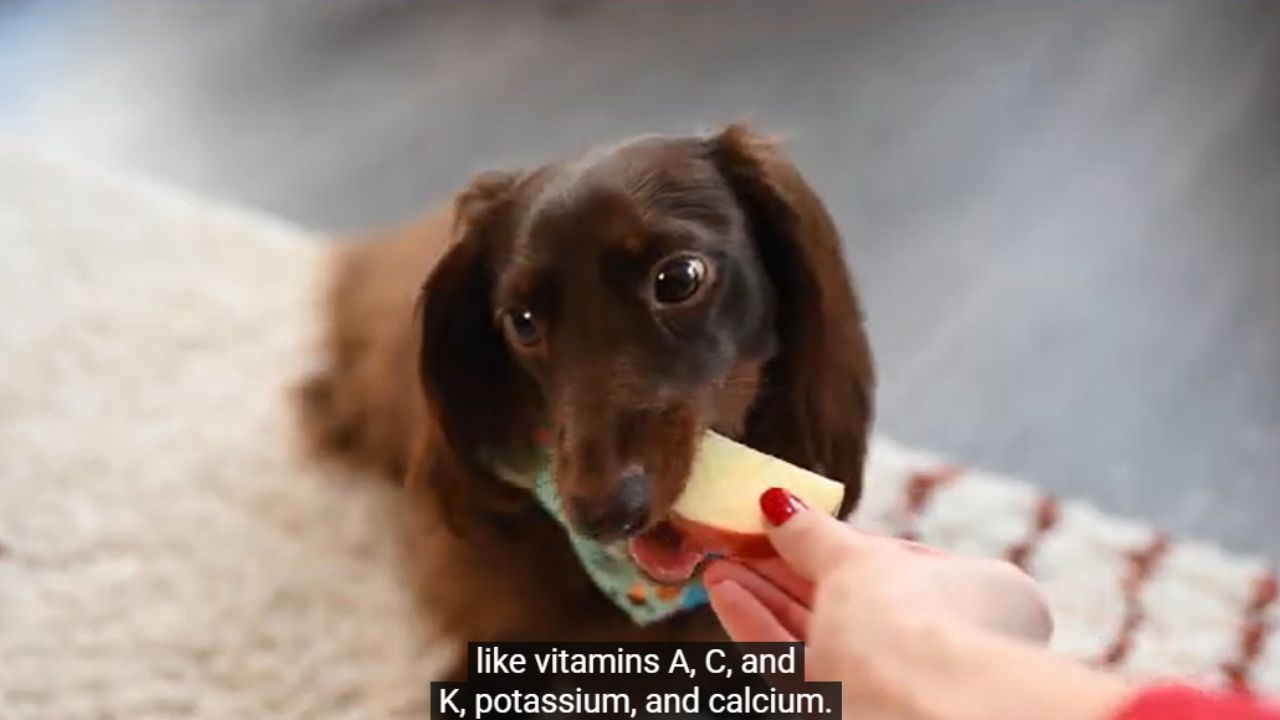
Frequently Asked Questions: Fiber in Dog Food.
How Do I Add Fibre To My Dog’s Diet?
Add fibre to your dog’s diet by including vegetables like carrots and green beans. Introduce small amounts of pumpkin or sweet potato. Choose high-fibre dog food or supplements after consulting your vet. Always ensure fresh water is available to aid digestion.
What Foods Are High In Fiber For Dogs?
Carrots, sweet potatoes, and pumpkin are high in fiber for dogs. Brown rice and oatmeal also provide good fiber content. Apples and green beans are healthy, fiber-rich snacks. Ensure to introduce these foods gradually into your dog’s diet to avoid digestive issues.
What Dog Food Is Best For Fibre?
High-fiber dog foods like Hill’s Science Diet, Royal Canin, and Blue Buffalo are excellent choices. Choose foods with ingredients such as sweet potatoes, pumpkin, or brown rice. These ingredients provide natural fiber and support digestive health for your dog. Always consult your vet to find the best option for your pet.
What Is The Best Fiber Product For Dogs?
The best fiber product for dogs is usually pumpkin. It’s natural, safe, and aids digestion. Many vets recommend adding canned pumpkin to dog food. Always consult your vet for personalized advice.
Why Is Fiber Important In Dog Food?
Fiber aids digestion and regulates bowel movements. It helps maintain healthy weight and prevents constipation.
Conclusion
Feeding your dog the right amount of fiber matters. It supports digestion. Keeps your pet healthy. Fiber can help with weight control. It also boosts energy levels. Choose dog food with balanced fiber content. Check labels carefully. Consult your vet for specific needs.
Every dog is unique. Their dietary needs vary. Regularly monitor your dog’s health. Watch for any changes. Adjust their diet as needed. Fiber plays a crucial role. Keep it in mind when selecting food. A healthy diet equals a happy dog.
Your furry friend deserves the best care.



